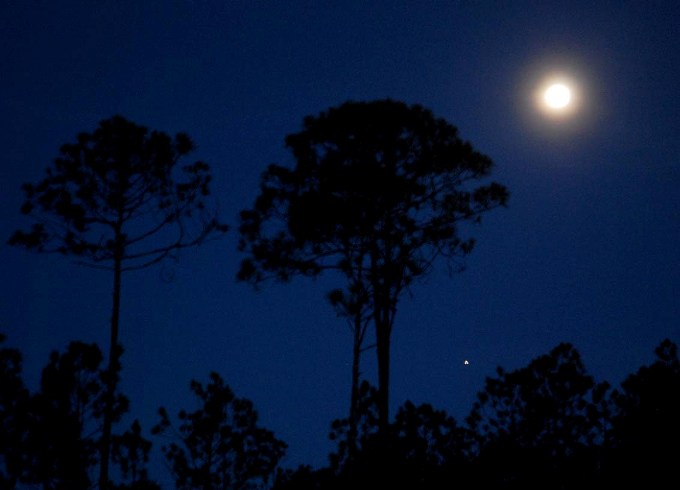Cuba Expert at Copenhagen Meeting
Daniela Estrada – IPS/Terraviva*

HAVANA TIMES, Dec 13 (IPS) – “Energy is an instrument of power. Whoever has energy, controls the world,” Cuban expert Luis Bérriz said in an address to Klimaforum, the civil society meeting being held in parallel to the UN conference on climate change in the Danish capital.
Cuba ditched the pursuit of nuclear energy, not at the behest of countries like the United States, but because it discovered that the sun “is the energy of socialism,” Bérriz said Sunday. He was referring to an abandoned project, dating from the 1980s, for a nuclear plant in Juraguá, in the province of Cienfuegos.
Bérriz, the head of the Cuban Society for the Promotion of Renewable Energy Sources and Respect for the Environment (CUBASOLAR), arrived in the Danish capital Dec. 8 to give several talks at Klimaforum and participate as an observer at the climate change summit.
“Hard energy, concentrated in coal, oil and nuclear power is imperialistic and capitalist,” said Bérriz in a talk on Cuba’s state energy policy.
In contrast, “the sun shines for everyone, even the rich. It belongs to no one, therefore solar energy is the energy of socialism, the peoples’ energy, the energy of the future,” added the Cuban scientist and expert on non-conventional renewable energy sources (NCRE).
To avoid a new form of “control” through the use of NCRE, countries must “develop their own know-how” and avoid importing equipment as well as technological capability from rich countries, said Bérriz, who was invited to Copenhagen by the Danish-Cuban Friendship Association.
Cuba has just completed the construction of a factory for manufacturing solar heaters, and is expanding another plant that produces solar panels.
Cuban expert addressed NGOs from around the globe
At Klimaforum, held at a sports center near Copenhagen’s central train station, NGOs from all over the world have warned that conversion to a low-carbon economy with reduction of greenhouse gas emissions, as discussed by the states at the Dec. 7-18 15th Conference of the Parties (COP 15) to the United Nations Framework Convention on Climate Change, may become just another form of the prevailing economic system, or capitalism in a “green” garb.
“If we focused on developing NCRE, a conference like this (COP 15) would be totally unnecessary. We would not need to be concerned about global warming,” Bérriz said.
At present 96 percent of Cubans have full access to electricity in their homes, he said. The remainder have electricity for some hours a day, and some families have not yet been connected to any power grid.
But the Cuban government, according to Bérriz, will not rest until all of Cuba’s 11.2 million people have access to electricity, as they already do to health and education services.
The “energy revolution” in Cuba, which got under way in 2006 after a severe crisis which caused frequent, lengthy blackouts, is based on four pillars, said Bérriz.
The first is energy saving and efficiency, which has led to changing light bulbs and other inefficient domestic appliances for efficient ones, at low cost and with payment facilities for families, he said.
The second is “distributed electricity generation,” meaning multiple generation facilities throughout Cuban territory.
“A hard, concentrated energy policy would build very large power plants and distribute electricity from them to a wide area. It’s a problem of control. We are going to produce electricity in a lot of small plants that are close to consumers,” Bérriz told TerraViva.
He said this policy has a number of benefits. For instance, if a hurricane destroys a huge coal-fired thermoelectric plant, the chances are that most of the population will suffer a blackout. In contrast, if four or five small hydroelectric stations are damaged instead, power failures would be small and localized.
“Another advantage is in a war situation. Formerly, the United States (Cuba’s long-time adversary) could have sent over six or seven bombs and taken out the whole national electrical system. That’s no longer the case: we have thousands (of plants). It would have to send thousands of bombs,” the scientist said.
As in other Latin American countries, the remaining pillars of the Cuban energy revolution are the use of NCRE and promotion of an environmentally sustainable energy culture.
According to Bérriz, Cuba could make a contribution to the world, and especially the countries of the region, in terms of transfer of scientific knowledge. The difficulty, he says, are the country’s limited resources, compounded by the nearly half-century U.S. embargo, the global economic crisis and seasonal hurricane damage.
Cuban experts have been invited by the Chilean government to teach people how to make biogas digesters, and to Peru to make solar driers for industrial timber factories. In Ecuador, they have helped build small hydroelectric stations, and they have also helped electrify areas in Bolivia and Venezuela, he said.
*This story appears in the IPS TerraViva online daily published for the U.N. Conference on Climate Change in Copenhagen.






HT: What Cuba and other countries–inc the US–need are thousands of “vertical,” “backyard” Concentrated Solar Power generators, rather than massive, expensive, “horizontal” generating stations like the one in the California Mohave Desert near Barstow.
These would employ used, out-of-service utility poles erected by the twos. Inexpensive coils would go up the one and come down the other. The liquid used could be water from the service line. These would sit there all day in the sun and capture the sun’s heat.
Reflective, half-circle metal reflector sheaths that would follow the sun could be added to double the capture power. The water would move up one pole and down the other, and flow into a capture vessel. Utilizing this super-hot water would be a snap.
These types of inexpensive generators could be erected all over Cuba and the rest of the less-industrialized world, by individual households, farms, businesses, etc. and help save the planet’s ecology.